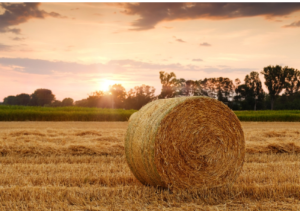In the sprawling landscapes of Australia, where agriculture is a cornerstone of the economy, there exists a humble yet essential tool that quietly supports the backbone of farming operations: a strong baling twine. Often overlooked amidst the grandeur of machinery and technology, baling twine plays a crucial role in the success and sustainability of agricultural practices across the continent. From securing hay bales to repairing fences, its versatility and reliability make it an indispensable asset for farmers navigating the challenges of rural life. In this article, we delve into the multifaceted world of baling twine in Australia, exploring its origins, applications, and enduring significance in the agricultural landscape.
 Origins and Evolution
Origins and Evolution
Baling twine traces its roots back to the early days of mechanised agriculture when the need arose for a reliable method to bind and bundle harvested crops. Originally crafted from natural fibres such as hemp or sisal, baling twine has evolved with advances in material science and manufacturing techniques. Today, it is predominantly made from synthetic materials like polypropylene, which offer enhanced durability and resistance to environmental factors. This evolution has allowed baling twine to withstand the rigours of modern farming practices, ensuring its continued relevance in Australian agriculture.
A Multifunctional Tool
At its core, baling twine serves as a versatile and adaptable solution for a wide range of agricultural tasks. Its primary role lies in securing and bundling hay bales, safeguarding them against damage and deterioration during storage and transportation. However, its utility extends far beyond hay baling, with farmers utilising it for various applications on the farm. From repairing fences and constructing temporary shelters to bundling equipment and materials, baling twine proves invaluable in addressing the diverse needs of agricultural operations. Its flexibility and strength make it a reliable ally for farmers facing the ever-changing demands of rural life.
Efficiency and Productivity
Efficiency is paramount in the world of agriculture, where every moment and resource must be maximised to ensure success. Baling twine plays a critical role in enhancing efficiency by streamlining the process of harvesting, storing, and transporting crops. By securely binding hay bales, farmers can minimise the risk of spoilage and waste, optimising yield and profitability. Moreover, the durability and reliability of baling twine reduce the significant need for frequent replacements, saving both time and resources in the long run. This efficiency not only benefits individual farmers but also contributes to the overall productivity and sustainability of the agricultural sector in Australia.
Environmental Considerations
In an era where environmental sustainability is undeniably paramount, the impact of agricultural practices on the ecosystem is under increasing scrutiny. A strong baling twine, typically made from recyclable materials, aligns with the principles of sustainability by offering a reusable and eco-friendly solution for farmers. Its longevity and durability help minimise waste and reduce the environmental footprint of agricultural operations, contributing to a more sustainable and responsible approach to farming. Additionally, ongoing efforts to explore biodegradable alternatives aim to mitigate environmental impact further and promote greener practices in agriculture.
Community and Tradition
Beyond its practical utility, baling twine holds cultural significance within rural communities across Australia. It symbolises the resourcefulness and resilience of farmers who rely on ingenuity and hard work to overcome the challenges of their environment.
Looking to the Future
As technology continues to advance, so too does the evolution of baling twine. Innovations in material science and manufacturing processes are leading to the development of even stronger and more durable variants, further enhancing their utility in agricultural applications. Additionally, research into biodegradable alternatives aims to address concerns regarding environmental sustainability, paving the way for a greener future in farming practices. By embracing innovation and adaptation, Australian farmers are poised to continue reaping the benefits of baling twine while minimising their impact on the environment.